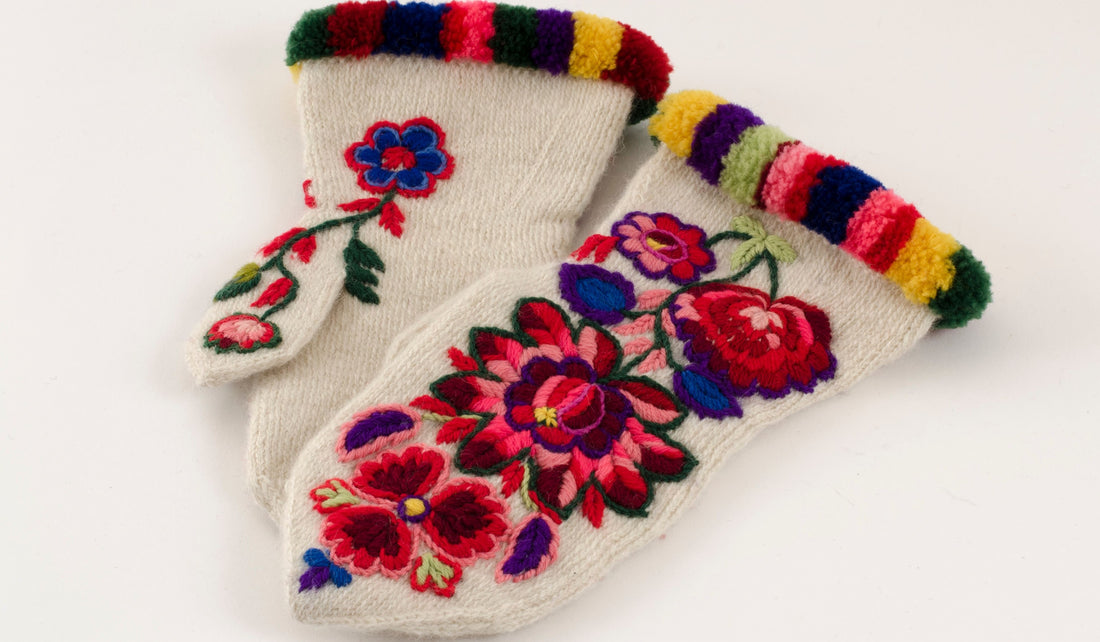
Colour Shock

Images courtesy of Anna-Karin Jobs Arnberg (c) Lena Katarina Johansson.
In our current issue – Issue 96: Nordic – we celebrate the textile traditions of northern Europe. In Sweden, Ingela Hofsten meets Anna-Karin Jobs Arnberg to learn about wool embroidery in the Dalarna region, the iconic påsöm. Anna-Karin is Head of Operations and Antiques at Dalarna Museum, essentially a trained handicraft consultant. She became interested in the embroidery art of her hometown of Floda as a young girl, when there were still a few women in the village who wore parts of the parish folk costume for everyday life. Floda has a long tradition of embroidering stylistic floral motifs on women's skirts and half-waistcoats, but also on so-called bracelets (or wrist-warmers), braces and mittens for men.

But why exactly in Floda? Arnberg believes that it has something to do with the old embroidery tradition here, and an innovative, progressive and independent population. She shows a photo from 1910 of a middle-aged couple from Floda. The woman does not wear headgear. This is progressive for a time when married women in the countryside were expected to cover their hair.

Floda is also known to blend colour and pattern well; checkered with floral, red with pink, traditional costume with modern clothing. The mix even has its own words: ‘slims’ and ‘randila’. It was the folk dance movement of the 1970s that came up with a lot of rules about wearing apparel. Before that, the costume always followed fashion changes. In Floda, the stylistic embroidery patterns gave way to increasingly naturalistic motifs of water lilies, lily of the valley, forget-me-nots and daisies. The patterns were also tied together with green garlands, so that they form whole ‘bouquets’. It also became common to use templates of cut flower wallpaper and newspaper images. At the same time, many seamstresses developed their own embroidery style. The new way of embroidery coincided with a surge of national romance. Floda got the epithet ‘Dalarnas lustgård’ (valley of Eden) and soon the ornate textiles were in demand from other parts of the country.
To read the full article, buy Issue 96, only available from Selvedge.
